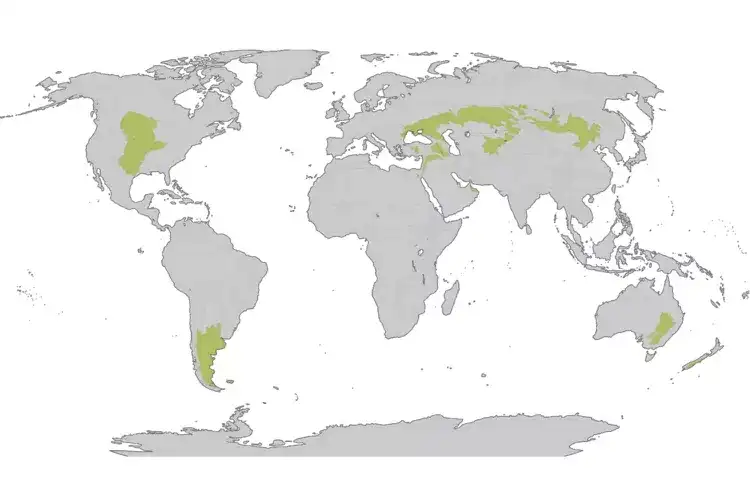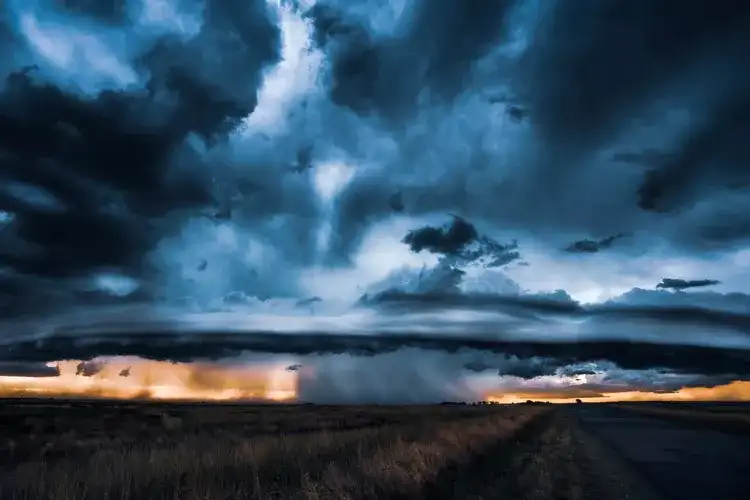Where to Find Temperate Grasslands Across the Globe

Temperate grasslands are sweeping stretches of open plains found on every continent except Antarctica. Known by names like pampas (Argentina), steppes (Russia), veldts (South Africa), downs (Australia and New Zealand), and prairies or plains (North America), these regions are shaped by their unique climates and sparse tree cover.
- Argentina – pampas.
- Australia and New Zealand – downs.
- Central North America – prairies and plains.
- Hungary – puszta.
- Russia – steppes.
- South Africa – veldts.
Climate: Extreme Seasons and Powerful Forces
Temperate grasslands experience dramatic seasonal swings, with icy winters and hot summers. Winter temperatures can plunge well below 0°F, while summers can soar above 90°F. These areas get 20 to 35 inches of precipitation annually, mostly as snow in the north.

Nature’s Wildcards: Tornadoes, Blizzards, and Fires
Three natural events play outsized roles in shaping these grasslands:
- Tornadoes: Especially common in the U.S. plains (“Tornado Alley”), where clashing air masses spark hundreds of tornadoes each year.
- Blizzards: Fierce winter storms whip across the plains, dropping snow and driving bitter winds.
- Fires: Lightning or human activity can set dry grass ablaze. Fires sweep quickly across the landscape but also prevent trees and shrubs from taking over, helping grasslands stay grasslands.
Vegetation: Deep Roots and Resilience
Low to moderate rainfall and harsh conditions make grass the dominant life form here. Trees and woody shrubs struggle to survive. Instead, grasses develop deep, sprawling root systems to anchor them through drought, cold, and fire. This helps the land resist erosion and conserve water.
- Short grasses thrive where rainfall is scarce; taller varieties grow in wetter zones.
- Common plants include buffalo grass, cacti, sagebrush, sunflowers, clovers, wild indigos, and perennial grasses.
Wildlife: From Mighty Herds to Silent Predators

Temperate grasslands support a diverse array of animals. Large herds of herbivores roam the open plains, constantly on the move to find fresh grass. Carnivores stalk these herds or hunt smaller prey, while countless other creatures fill the skies and burrows.
- Herbivores: Bison, gazelles, zebras, rhinoceroses, wild horses, deer, prairie dogs, mice, jack rabbits.
- Carnivores: Wolves, lions, coyotes, foxes.
- Birds and others: Owls, hawks, badgers, skunks, snakes, grasshoppers, blackbirds, meadowlarks, sparrows, quails.
Why Fires and Storms Are Essential for Grassland Survival
While fires and storms can be destructive, they are crucial for maintaining the grassland ecosystem. Fires stop invasive shrubs and trees from taking over, while tornadoes and blizzards create space for renewal and diversity. These disturbances ensure that grasslands remain wide open, dynamic, and full of life.
More Land Biomes to Explore
Temperate grasslands are just one of Earth’s major habitats. Others include:
- Chaparrals: Dense shrubs, dry summers, and damp winters.
- Deserts: Defined by low precipitation, not just heat.
- Savannas: Large grasslands with scattered trees, home to fast-moving wildlife.
- Taigas: Dense, cold coniferous forests.
- Temperate forests: Deciduous trees and marked seasons.
- Tropical rain forests: Hot, humid, and lush, with towering trees and constant rain.
- Tundra: The coldest biome, with permafrost and sparse vegetation.
Vast, wild, and shaped by powerful natural forces, temperate grasslands remain one of the planet’s great living landscapes—essential for wildlife and a testament to nature’s resilience.





